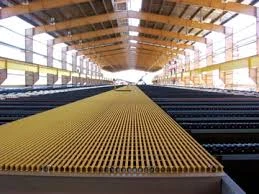
-
 Afrikaans
Afrikaans -
 Albanian
Albanian -
 Amharic
Amharic -
 Arabic
Arabic -
 Armenian
Armenian -
 Azerbaijani
Azerbaijani -
 Basque
Basque -
 Belarusian
Belarusian -
 Bengali
Bengali -
 Bosnian
Bosnian -
 Bulgarian
Bulgarian -
 Catalan
Catalan -
 Cebuano
Cebuano -
 China
China -
 China (Taiwan)
China (Taiwan) -
 Corsican
Corsican -
 Croatian
Croatian -
 Czech
Czech -
 Danish
Danish -
 Dutch
Dutch -
 English
English -
 Esperanto
Esperanto -
 Estonian
Estonian -
 Finnish
Finnish -
 French
French -
 Frisian
Frisian -
 Galician
Galician -
 Georgian
Georgian -
 German
German -
 Greek
Greek -
 Gujarati
Gujarati -
 Haitian Creole
Haitian Creole -
 hausa
hausa -
 hawaiian
hawaiian -
 Hebrew
Hebrew -
 Hindi
Hindi -
 Miao
Miao -
 Hungarian
Hungarian -
 Icelandic
Icelandic -
 igbo
igbo -
 Indonesian
Indonesian -
 irish
irish -
 Italian
Italian -
 Japanese
Japanese -
 Javanese
Javanese -
 Kannada
Kannada -
 kazakh
kazakh -
 Khmer
Khmer -
 Rwandese
Rwandese -
 Korean
Korean -
 Kurdish
Kurdish -
 Kyrgyz
Kyrgyz -
 Lao
Lao -
 Latin
Latin -
 Latvian
Latvian -
 Lithuanian
Lithuanian -
 Luxembourgish
Luxembourgish -
 Macedonian
Macedonian -
 Malgashi
Malgashi -
 Malay
Malay -
 Malayalam
Malayalam -
 Maltese
Maltese -
 Maori
Maori -
 Marathi
Marathi -
 Mongolian
Mongolian -
 Myanmar
Myanmar -
 Nepali
Nepali -
 Norwegian
Norwegian -
 Norwegian
Norwegian -
 Occitan
Occitan -
 Pashto
Pashto -
 Persian
Persian -
 Polish
Polish -
 Portuguese
Portuguese -
 Punjabi
Punjabi -
 Romanian
Romanian -
 Russian
Russian -
 Samoan
Samoan -
 Scottish Gaelic
Scottish Gaelic -
 Serbian
Serbian -
 Sesotho
Sesotho -
 Shona
Shona -
 Sindhi
Sindhi -
 Sinhala
Sinhala -
 Slovak
Slovak -
 Slovenian
Slovenian -
 Somali
Somali -
 Spanish
Spanish -
 Sundanese
Sundanese -
 Swahili
Swahili -
 Swedish
Swedish -
 Tagalog
Tagalog -
 Tajik
Tajik -
 Tamil
Tamil -
 Tatar
Tatar -
 Telugu
Telugu -
 Thai
Thai -
 Turkish
Turkish -
 Turkmen
Turkmen -
 Ukrainian
Ukrainian -
 Urdu
Urdu -
 Uighur
Uighur -
 Uzbek
Uzbek -
 Vietnamese
Vietnamese -
 Welsh
Welsh -
 Bantu
Bantu -
 Yiddish
Yiddish -
 Yoruba
Yoruba -
 Zulu
Zulu
Innovative Solutions for Efficient Fiberglass Duct Systems in Modern HVAC Applications
The Versatility and Benefits of Fiberglass Ducts
In the realm of HVAC (heating, ventilation, and air conditioning) systems, the choice of duct materials plays a crucial role in overall efficiency, energy conservation, and air quality. Among the various options available, fiberglass ducts have emerged as a popular choice among contractors, builders, and HVAC professionals. This article explores the key features, advantages, and applications of fiberglass ducts, illustrating why they are becoming increasingly favored in modern construction.
What Are Fiberglass Ducts?
Fiberglass ducts are made from reinforced fiberglass, typically combining resin and fiberglass filaments to create a lightweight, durable, and flexible material. These ducts come in various shapes and sizes, allowing for easy installation and customization to fit specific building layouts. Their smooth interior surfaces help facilitate airflow, while their insulating properties minimize heat loss and condensation.
Benefits of Fiberglass Ducts
1. Energy Efficiency One of the primary advantages of fiberglass ducts is their excellent thermal insulation. The fiberglass material helps maintain the desired temperature of the air being transported, reducing the energy required to heat or cool spaces. This efficiency not only contributes to lower utility bills but also aligns with contemporary sustainability goals and energy conservation practices.
2. Sound Absorption Another compelling feature of fiberglass ducts is their ability to minimize noise. The porous structure of fiberglass naturally dampens sound, making them an ideal choice for residential and commercial spaces where noise reduction is a priority. This characteristic is particularly valuable in office buildings, hospitals, and schools, where a quiet environment is essential for productivity and comfort.
fiberglass duct

3. Resistance to Moisture and Mold Fiberglass ducts are inherently resistant to moisture, preventing the growth of mold and mildew. This quality ensures better indoor air quality by reducing the presence of allergens and harmful pollutants that can arise from damp environments. Unlike metal ducts, which can corrode or rust, fiberglass maintains its performance over time, even in humid conditions.
4. Lightweight and Easy to Install Compared to traditional metal ductwork, fiberglass ducts are significantly lighter, making installation easier and less labor-intensive. This lightweight nature allows for quicker handling and installation, which can lead to reduced labor costs and project timelines. Additionally, their flexibility enables them to adapt to various configurations, further simplifying the installation process.
5. Cost-Effectiveness While the initial cost of fiberglass ducts may be higher than that of traditional materials, their long-term benefits often outweigh the upfront investment. The energy savings they facilitate, combined with their durability and low maintenance needs, lead to significant cost savings over the life of the HVAC system.
Applications of Fiberglass Ducts
Fiberglass ducts have a wide range of applications across various sectors. Due to their insulation properties, they are commonly used in heating systems, ventilation systems, and air conditioning setups. They are particularly advantageous in environments that require strict temperature control, such as laboratories, clean rooms, and production facilities. Additionally, their sound-dampening qualities make them suitable for use in auditoriums and theaters where acoustics are a concern.
Conclusion
In summary, fiberglass ducts offer a combination of efficiency, durability, and convenience that makes them an excellent choice for modern HVAC systems. As building codes and design practices evolve to prioritize energy efficiency and sustainability, the adoption of fiberglass ductwork is likely to increase. By choosing fiberglass ducts, builders and contractors can enhance indoor air quality, reduce noise pollution, and promote energy conservation—benefits that are increasingly critical in today’s environmentally conscious world. Whether for residential, commercial, or industrial applications, fiberglass ducts represent a forward-thinking solution to contemporary air distribution challenges.









